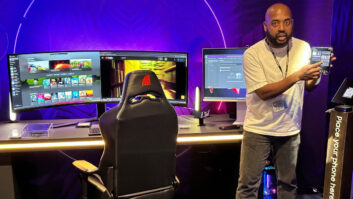It was with more than a passing interest that I read in a past issue of TWICE of the decision by Philips Consumer Electronics (PCE) to return Magnavox to its place as a freestanding brand and to drop the “Philips Magnavox” co-branding strategy. This marked yet another in a series of marketing, manufacturing and management changes made in an effort to solidify PCE’s historically shaky financial foundation.
If I sound a little biased here, well maybe I am, and if so, it’s not PCE’s fault but my own. It dates back to a phone call I received in the summer of 1974 from a friend in the parts business. He said a cousin, who worked for Magnavox, told him people from Dutch Philips were making extensive visits to all facilities and no one knew why. It was a tip I filed and forgot, at least until August 30, when Philips ran two-page ads in major newspapers to announce its tender offer for all outstanding Magnavox shares. I had blown a major scoop and I’m PO’ed about it to this day.
At that time Philips was the world’s leading consumer electronics brand everywhere in the world but the United States. So it was assumed that Philips would use the Magnavox acquisition as the springboard for the launch of its brand here. But that didn’t come until 1987, 13 years later.
By that time PCE had bought out the Sylvania consumer electronics business from GTE, acquiring the inventory, a license for the Sylvania brand and, most critically, full ownership of the Philco brand. It was always believed that the Philips-Philco similarity is what kept the Philips brand out of the U.S. market. And indeed, soon after it introduced the first Philips brand TVs, PCE relegated the Philco brand to occasional use on special low-ball and private label promotions. PCE decided not to renew its Sylvania license and the brand is now being used by Funai.
Since 1974, PCE went through a legion of sales, marketing and top management execs, many with no industry experience, drawn from such Philips-owned affiliates as Advance Transformer, Selmer Musical Instruments, Norelco, North American Philips and Sylvania.
But burdened with high operating and ongoing restructuring expenses and facing stiff price competition, PCE has been a relatively consistent money loser. The steady string of annual operating losses was broken for several years after PCE brought in as president Don Johnstone, a hard-nosed GE executive from the Jack Welch school of corporate surgery. Since Johnstone’s retirement, however, the losses have resumed.
The truth is we haven’t yet seen a successful takeover of an established American consumer electronics company. Matsushita was unable to keep Quasar going as an entity, turning it into just a brand name within Panasonic; Rockwell International bought and later folded Admiral; Ford had nothing but grief from its acquisition of Philco; and the Philco purchase certainly didn’t help Sylvania survive.
The jury is still out on the Thomson-RCA deal, though the Thomson Consumer Electronics of today is profitable and bears little structural resemblance to the RCA of yesterday. Similarly, the LG/Goldstar acquisition of Zenith is in the wait-and-see mode.
The fact of the matter is, consumer electronics is a frighteningly competitive business with high risks, low margins and an ever-changing marketplace. To its credit, despite the travails and barriers it has had to overcome, Philips has stuck to its goal of being a successful participant in the market and has been a steady and important contributor to the industry’s development. And that’s a lot more than can be said for many other companies.













